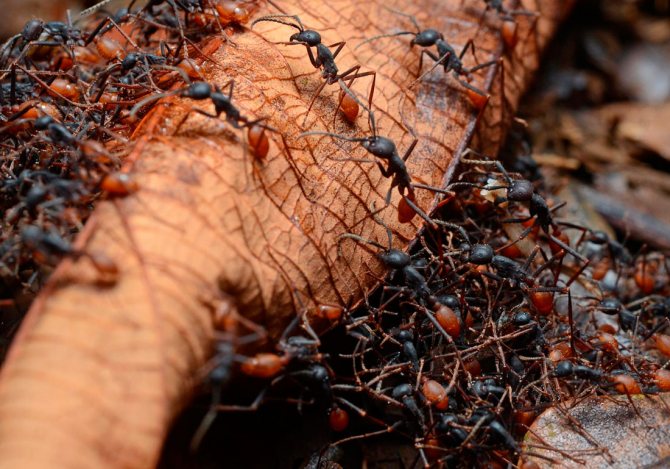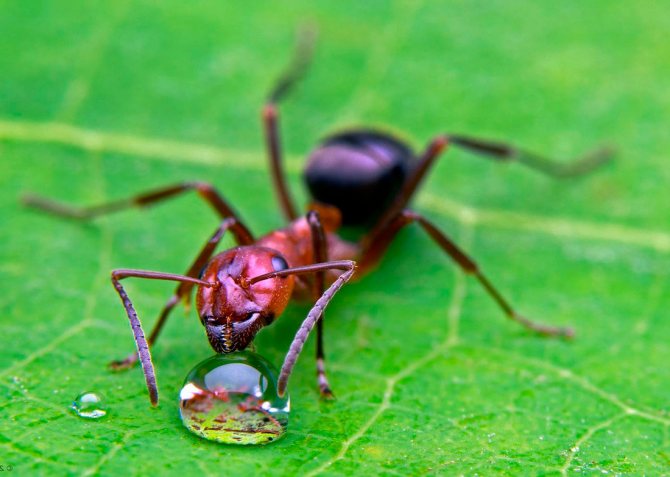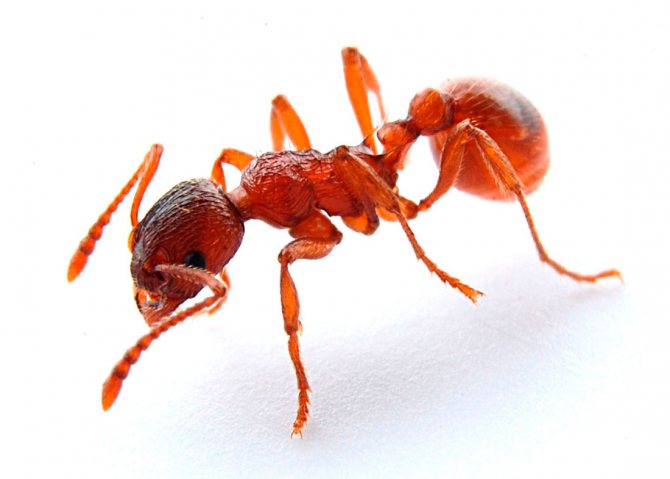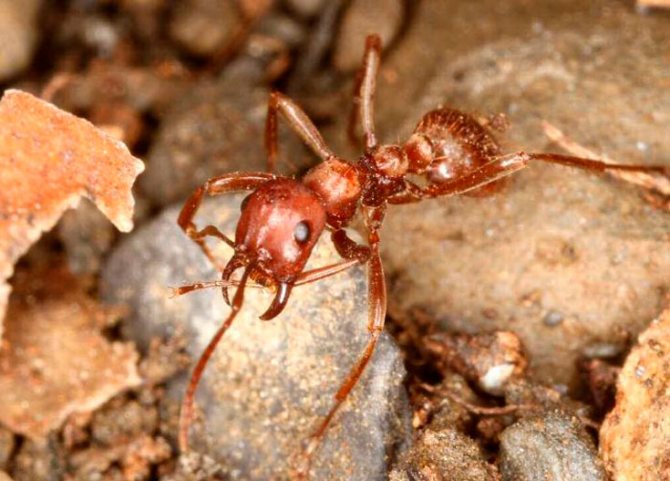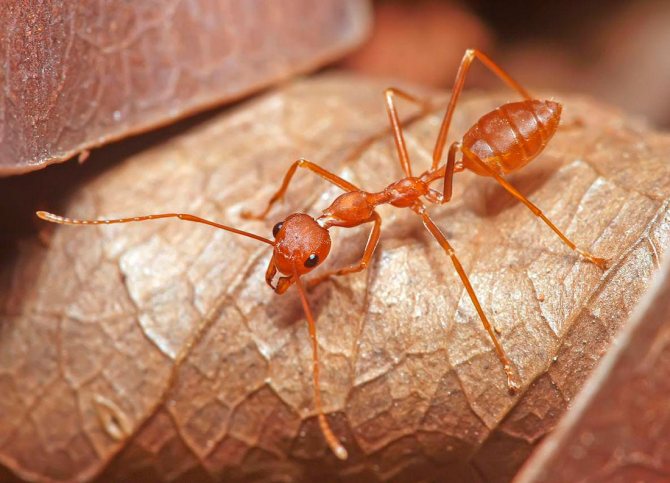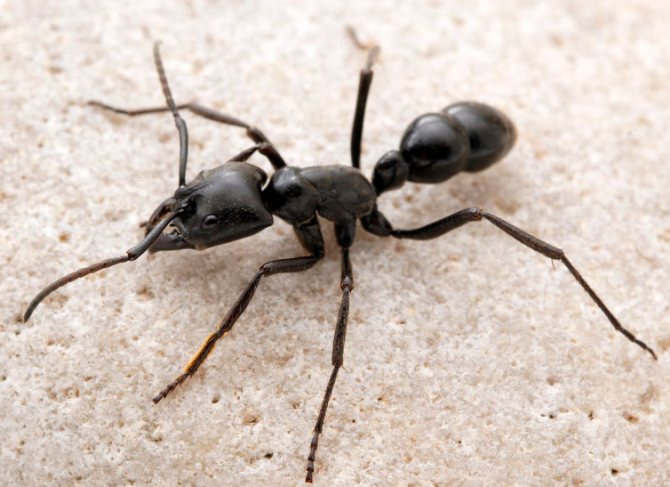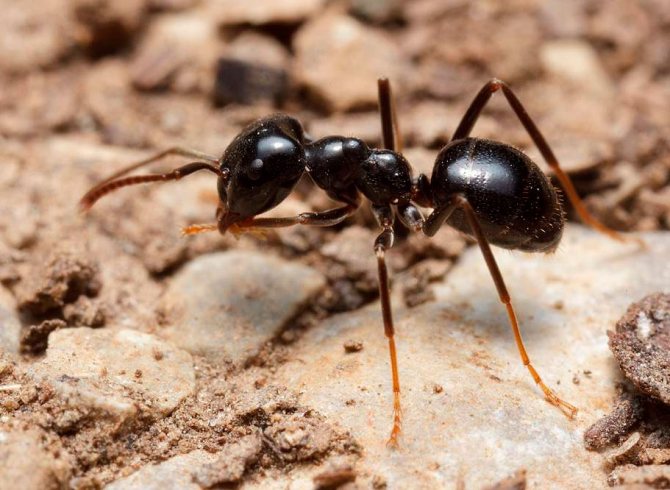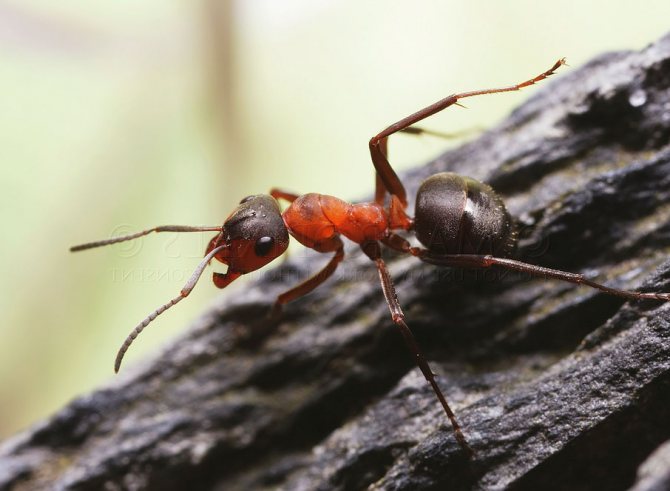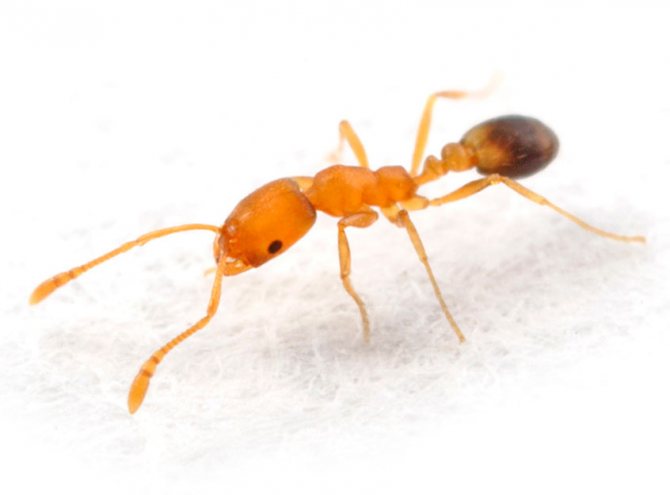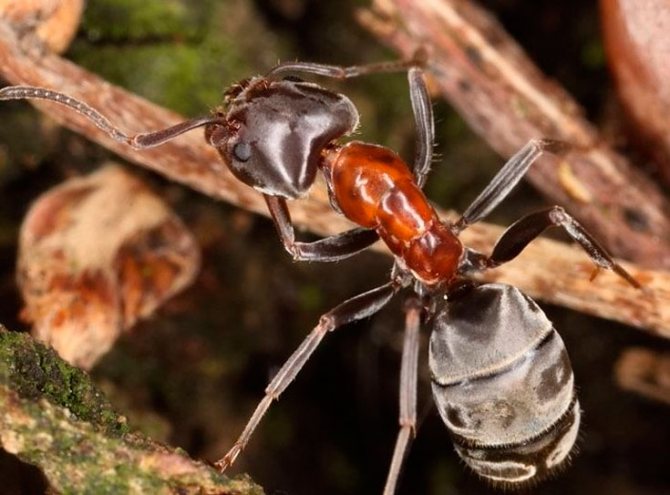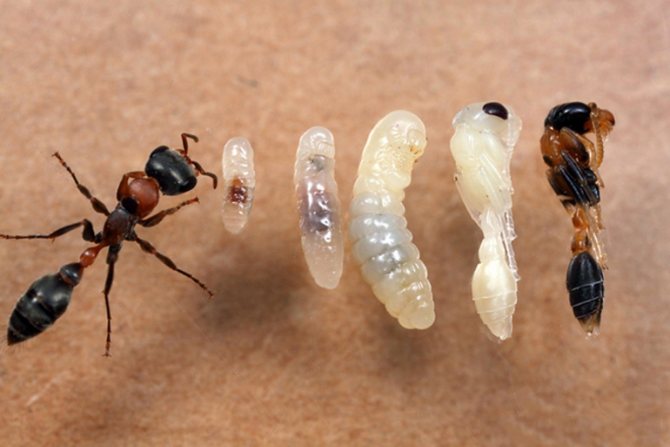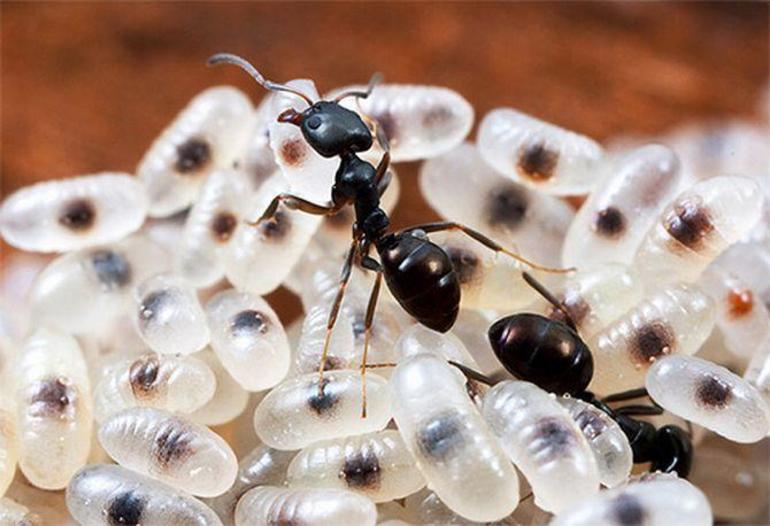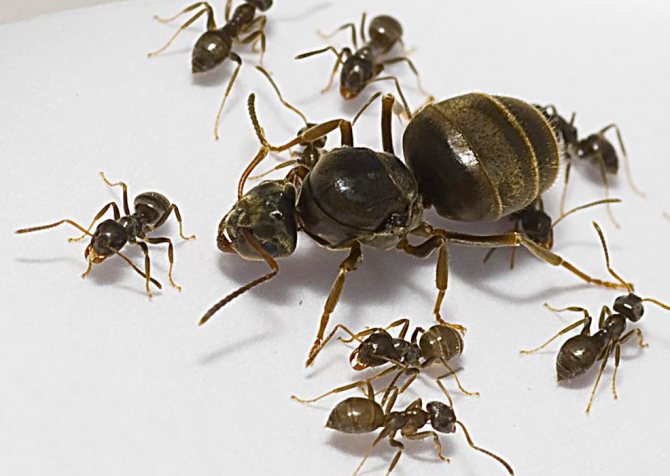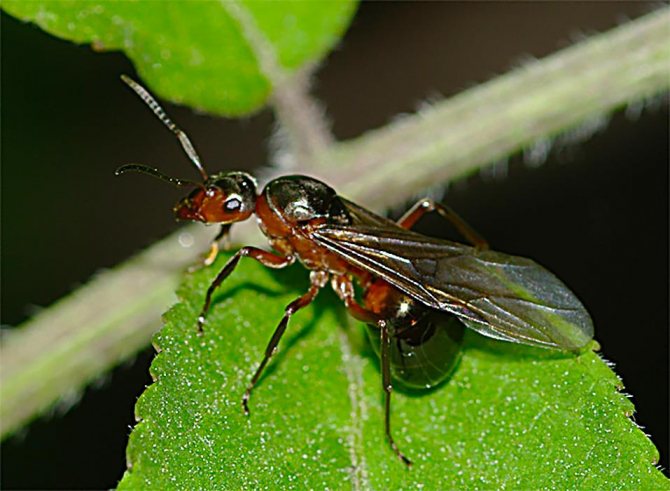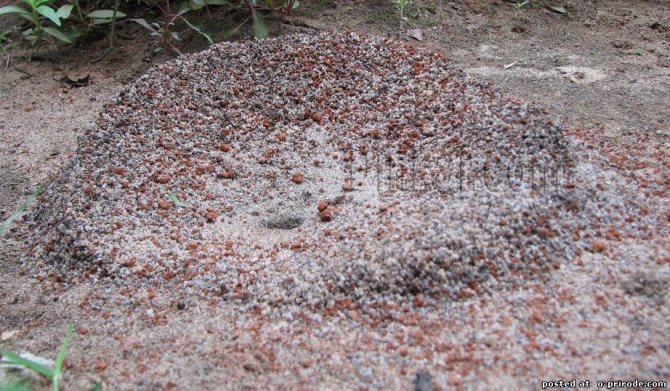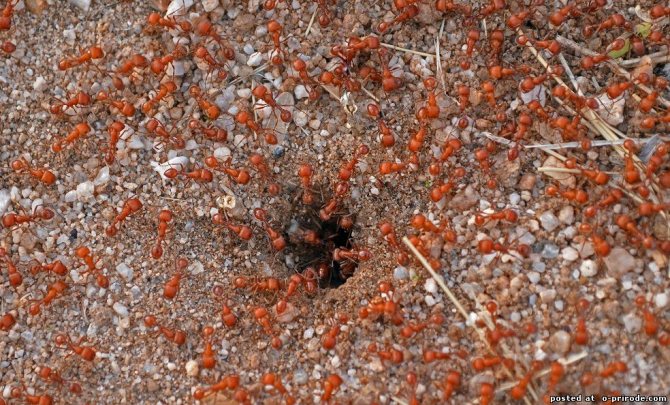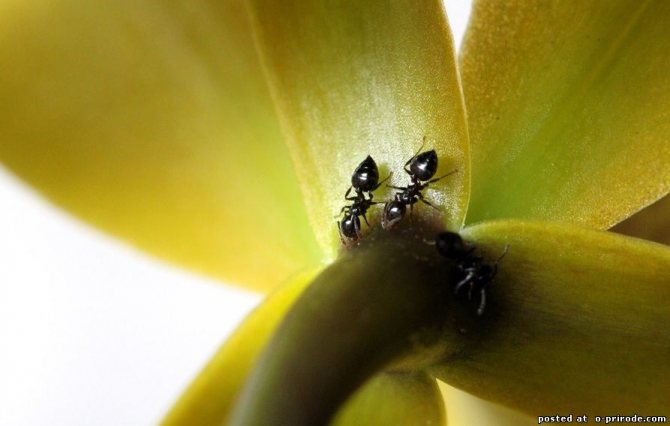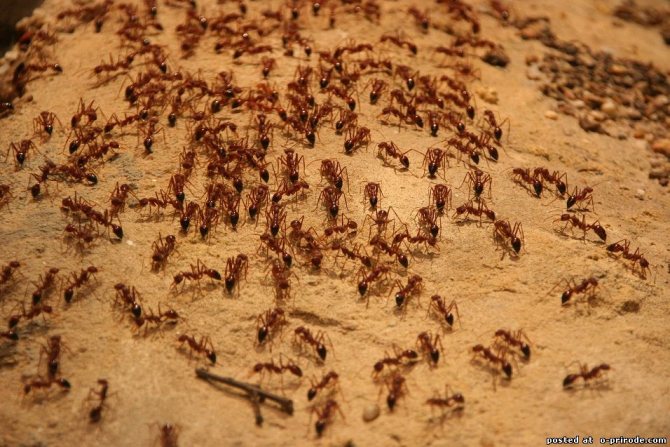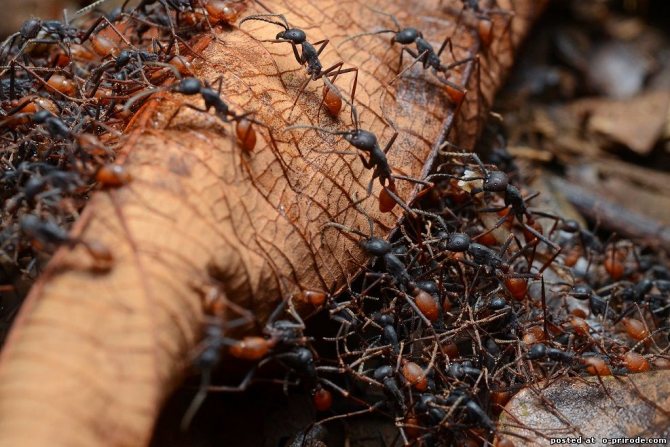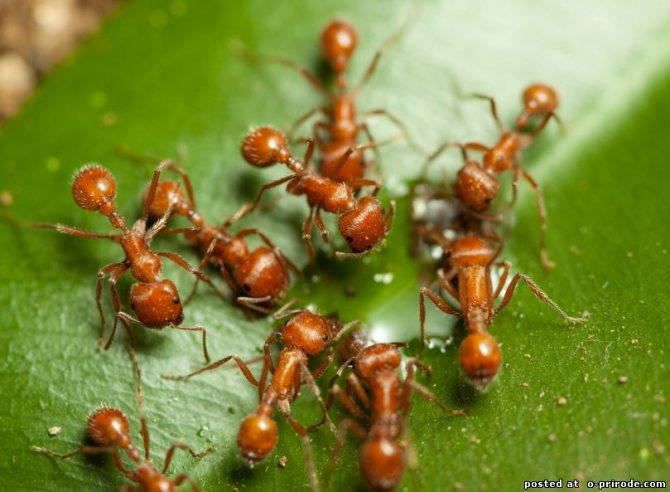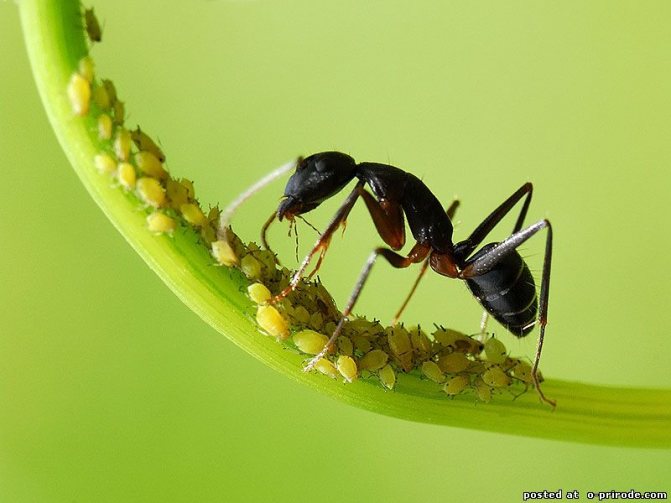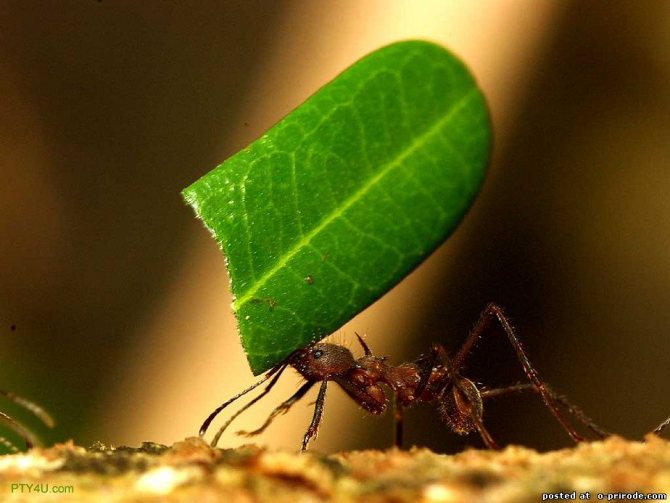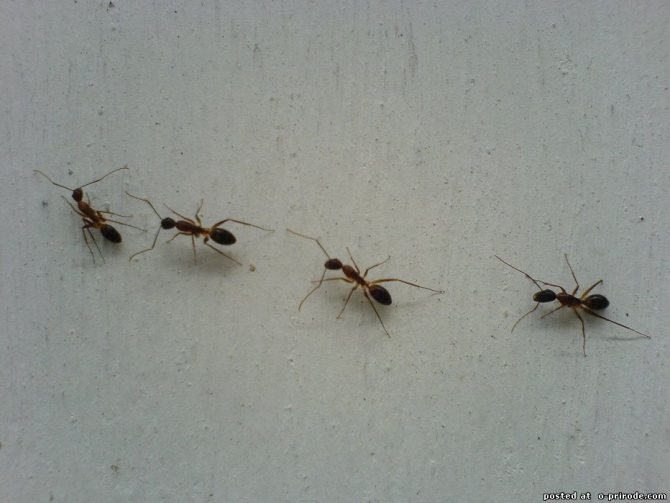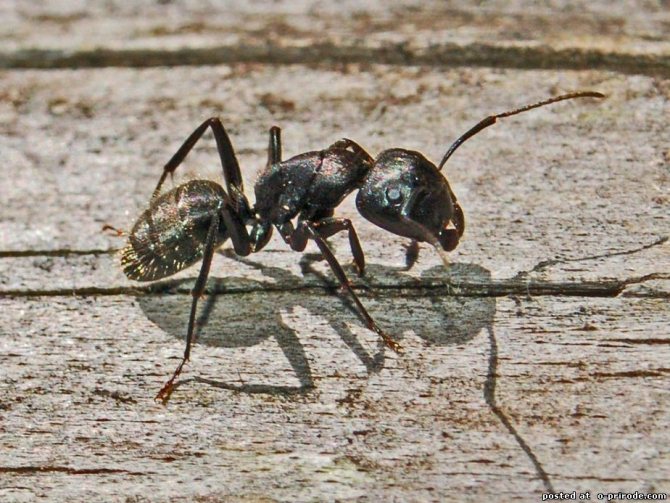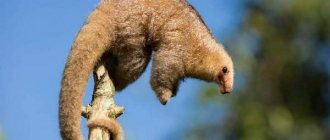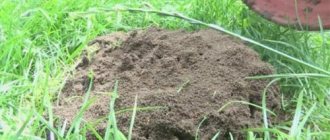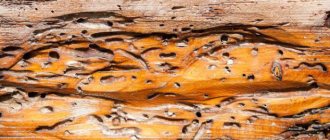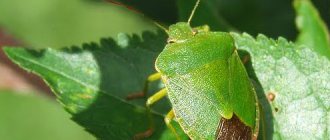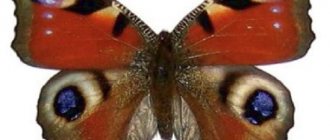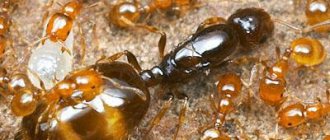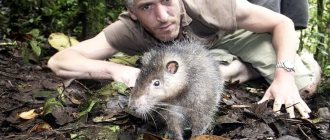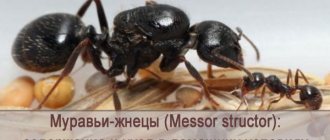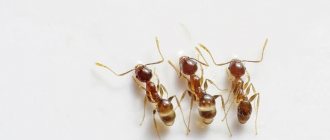For many peoples, ants are associated with hard work and endurance. These amazing insects live in one of the most numerous structures on the planet, and all members of the colony are biological relatives. In fact, ants have their own civilization with huge cities, a strict hierarchy and a caste system of division of duties.
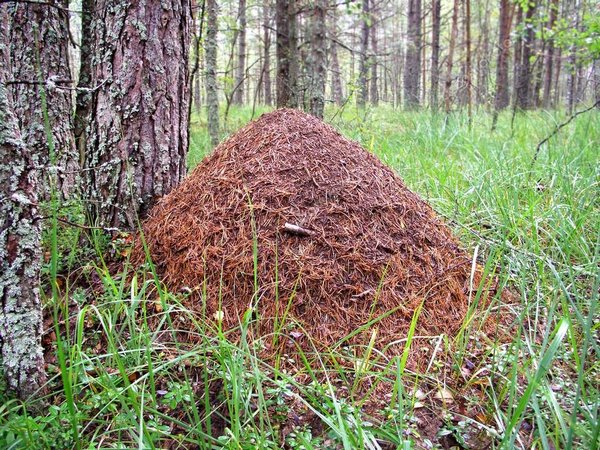
Ants are everywhere and can even live in your home.
The device of anthills is striking in its complexity, ants start building a nest and work for a family with all responsibility. The part of the anthill, which rises above the ground, is intended for the warm season, and in the underground part the insects hibernate. Both have numerous chambers for the queen, eggs, larvae, food warehouses, bedrooms, aphid wintering grounds, and even tombs in which ants bury their relatives. The entrances to the anthill are guarded by soldiers. There are even slave ants that keep ants of other species in their nests, forcing them to work for themselves.
Ants adapt well to any climatic conditions and do well in both hot and cold weather. In frosts, insects fall into suspended animation, but if the winter is not too harsh, the ants continue to lead their usual way of life, leaving the anthill and going in search of food.
Systematic position and species of ants
The scientific taxonomy of insects in general and ants in particular, which are called Formicidae, is based on several main taxa, that is, groups united by common characters. There are also intermediate categories in their systematic position. Information on the scientific classification of ants is presented in the table:
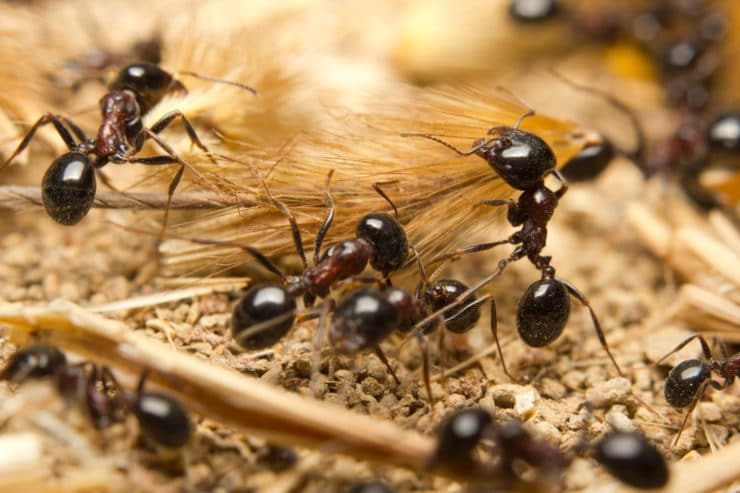

| Categories Used for Scientific Insect Taxonomy | Category names | |
| Basic taxonomic | Genus | Monomorium (or Formica, Lasius, etc.) |
| Family | Ants are real | |
| Kingdom | Animals | |
| Class | Insects | |
| The Department | Arthropods | |
| Order | Hymenoptera insects | |
| View | Pharaoh ant (and others) | |
| Intermediate | Subsection | Protostomes |
| Supertype | Shedding | |
| Subtype | Tracheal, or tracheal breathing (parous) | |
| Subkingdom | Eumetazoi or true multicellular | |
| Superclass | Six-legged | |
| Suborder | Stalk-bellied (Hymenoptera) | |
| Superfamily | Formicoidea | |
Today, 14,000 species of these insects are known, including extinct ones. 260 species live on the territory of our country. The most common are the following:
The main species of ants
Most often in our country there are:
- Red ants, their size reaches 10 mm. The most recognizable inhabitants of the forest, who build tall, cone-shaped anthills.
- Black or garden ants, about 5 mm in size. They build anthills in the root system of plants, such nests look like areas of loosened soil.
- Red-breasted woodworms. Large ants up to 20 mm in size, which settle in old stumps and logs. They can choose wooden buildings as a habitat.
- Red-haired myrmica. Like black ants, they build their nests in the soil, between the roots of plants. Are competitors of garden ants. Their size is about 5 mm.
- Pharaoh ants. Small house ants settle in walls, empty cavities, ventilation ducts.It is quite difficult to remove these insects; often you have to contact professional exterminators.
Description and photo, internal structure of insects
The size of these insects depends on the species and varies from 1 mm to several centimeters. Their body consists of 3 parts: head, chest and abdomen (in workers it has a sting). 3 pairs of legs equipped with claws are attached to the chest. The body may be covered with hairs. The head has 2 antennae and developed jaws. In addition to complex paired eyes, consisting of many small lenses, there are 3 tiny simple eyes on the parietal region, which perform the function of assessing the level of illumination and polarization. What an ant looks like can be seen in the photo.
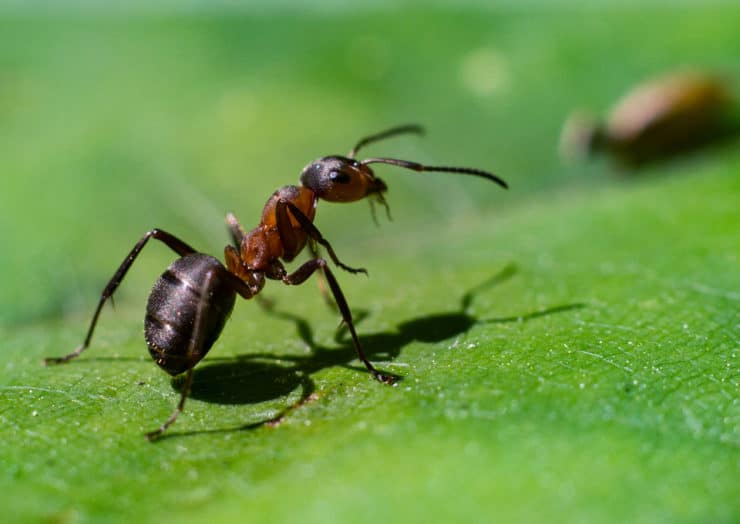

These creatures lack lungs. Oxygen and other gases involved in metabolism enter through microvalves in the exoskeleton, spreading through the trachea throughout the body. Ants do not have lacunar blood vessels. They are replaced by a long, thin, perforated tube that runs along the upper body and serves as the heart. These social insects form 3 castes: winged females and males and wingless workers.
Meadow ant
Another species common in Russia is meadow. The size of this insect varies between 5-11 mm. In meadow ants, the body is covered with villi, and there is a dark speck on the front of the breast. To build a house, they choose meadows, open edges and meadows. This species also breeds aphids. From the anthill to their "pastures" there are deepened paths with awnings over them. Ants walk along these paths for years. In addition to the secretions of aphids, these species of ants feed on dead insects. They very rarely enjoy themselves alive.
After winter, as soon as the air warms up to +10 degrees, they crawl out of the anthill. At a temperature of +30, insects do not leave their home. It was described above how many species of ants are in the world, but of all of them, only these fly out for breeding twice a season. They fall in May and August.
Lifestyle
The life of different species of ants follows approximately the same scenario. Reproduction, search for food, construction of an anthill, defense from natural enemies - these are the main stages of an ant's life. The food of red forest and black garden individuals differs from the food that is required by their domestic counterparts for normal life.
Reproduction and life cycle
How do these insects breed? Ants reproduce once a year. Mating occurs between winged individuals during the summer. After intercourse with a female, males usually die. Those of them who could not find a partner or failed to fertilize her are expelled from the anthill or killed by working insects.
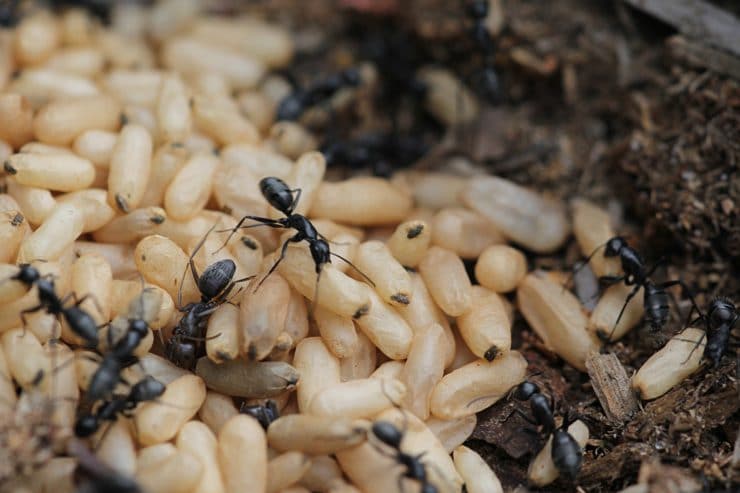

Fertilized females do not return to the anthill, but create their own nest. Ants are distinguished by a complete development cycle. On days 14–21 after laying the eggs, the larvae turn into pupae, and after 4–6 weeks the first adults are born, after which the females gnaw off their wings.
The lifespan of these creatures depends on their role and employment in the nest. A worker ant usually lives for about 3-5 years. The shortest lifespan in individuals who care for the queen and larvae, most of all, in those who are engaged in internal work in the anthill. The life span of a male ant is only 14–21 days. Male ants are designed to perform only one function - reproduction. The uterus, or queen, lives the longest - about 20 years.
Habitat, optimal living conditions
These insects have spread across all continents and climatic zones. They are found even in the desert and in Antarctica. Each of the species has its own habitat. Ants can migrate even between countries and continents, creating new colonies in places where they were not found before.
Insects live in any conditions, even at low temperatures. In the northern regions, during the cold period, they hibernate, which lasts up to 9 months. Physiological processes in their body are suspended at the same time.
What do ants eat naturally and at home?
What does the ant prefer to eat? Most of these insects are versatile predators, scavengers, and indirect foliage consumers. Their diet is based on 2 ingredients: protein and carbohydrate. The first one is mainly eaten by larvae, the second one - by adults. The source of proteins is various invertebrates, which are hunted by predatory insects, or their corpses, carbohydrates - honeydew, or honeydew (sweet substance secreted by aphids). They also feed on plant sap, flower nectar, mushrooms, seeds.
Species diversity of ants and features of their settlement
Biological classification refers all ants to family formicides (Formicidae) and the order of hymenoptera, which also includes bees, wasps and bumblebees. Indeed, ants, more precisely, ant queens, are winged in a short breeding period. Then the founder of the new anthill builds the first chamber of the future "palace", bites off her own wings, which she no longer needs, and over a long, sometimes twenty-year life, gives birth to a large ant tribe, which, in accordance with its castes, will build, work, nurse the larvae, get food and defend the territory.
In the ant family formicide there are about 7000 species... These heat-loving insects are especially numerous and diverse in the tropics, and the natural limit of their dispersal is the cold forest-tundra zone.
In warm latitudes - paradise ant places - exotic, aggressive, dangerous and amazing species have formed:
South American Bullet Ant with an extremely painful bite, the sensation of which is compared precisely with a bullet wound. The length of these insects reaches three centimeters.
Red fire ants... The aggressive Brazilian species, which was accidentally introduced to the southern United States, displaced a significant proportion of the native ants, and then, through merchant ships, spread to Australia and China. The pain from an insect bite of this species is the same as from a fire burn.
Black bulldog ants live in Australia and Tasmania. When bitten, a strong poison is released, which, in addition to pain, often causes acute, deadly allergic reactions.
Soldier ants Is a nomadic species found in South America and Africa. They spend a significant part of their lives moving in dense columns, which destroy all living things on their way, unable to quickly hide. Lacking a permanent nest, they form a temporary breeding ground, forming a spherical colony of their own bodies, linked to each other.
Yellow antsliving in the state of Arizona, produce the strongest poison that can kill any animal weighing up to two kilograms.
Fortunately, in the middle lane, these monsters of the ant world do not survive.
Inhabited by 220 species ants in Russia and the CIS countries, which are distributed in full accordance with temperature conditions - the farther north the area, the fewer ant species live there:
- Caucasus region - more than 160 species;
- Ukraine - 74 species;
- Moscow region - 40 species;
- Arkhangelsk region - 24 species.
In the middle lane, three types of ants are most often found:
- Red-haired myrmica with a yellow-brownish-red body, no more than 6mm in length. This species feeds on insects, including pests, and also collects sweet honeydew - the sugary secretions of aphids.
- Ginger forest ant of medium size with a dark abdomen and reddish middle segments of the body, it is the main fighter against insect pests of the forest. It is included in the international Red List of Endangered Species.
- Black garden ant reaches a length of 1 cm, destroys insects and collects sweet debris from aphids. The black garden "queen" lives for a record long time - 28 years.
Photo
Next, you will see a photo of all types of ants:
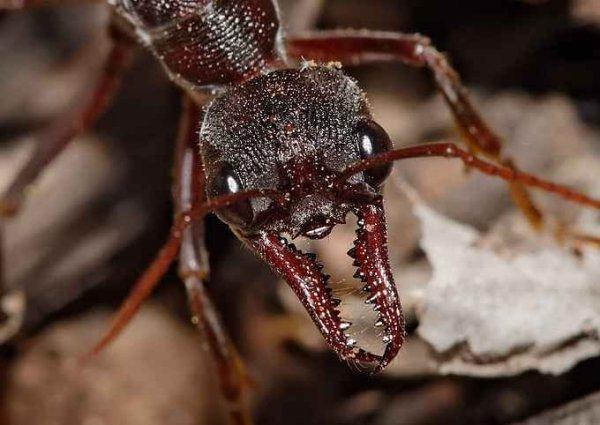

In addition to these natural species, it is almost ubiquitous brownie, ship or pharaoh ant, first found in Egyptian tombs and, thanks to its small size and high adaptability, spread over vast territories. The length of its yellow translucent yellow body with a dark abdomen does not exceed 5mm. This heat-loving species settles exclusively in houses and apartments, multiplies rapidly, spoils food that it can reach and can be a carrier of infectious diseases. Forms several colonies that ensure the preservation of the number: if one nest is destroyed, the remaining clusters of insects will quickly restore the ant "population".
IMPORTANT: The pharaoh ant invading a person's dwelling is certainly an unpleasant neighbor, which should be got rid of as soon as possible.
The rest of the common species of ants, from one side, bring undoubted benefit... Their daily activities to move and process a variety of substances improves soil structure and fertility... Numerous harmful insects become a prey for ants.
However, ants are not only guard aphids and worms - suppliers of sweet honeydew for them - but also bred of these pests, settling them on green stems and leaves of plants, including cultivated ones.
Therefore, for gardening farms, the neighborhood with large anthills is undesirable.
Biologically expedient organization of colonies, poisonous chemical "weapons" and a high ability to adapt make ants the champions in numbers among insects.
A variety of ant species colonize all latitudes from the forest-tundra to the tropics, destroying pests and ensuring the transfer of nutrients to the soil.
At the same time, the invasion of these thousands of ant communities on agricultural land and in human dwellings forces us to look for ways to effectively combat them.
Ants in the garden and garden: benefits and harms, methods of destruction
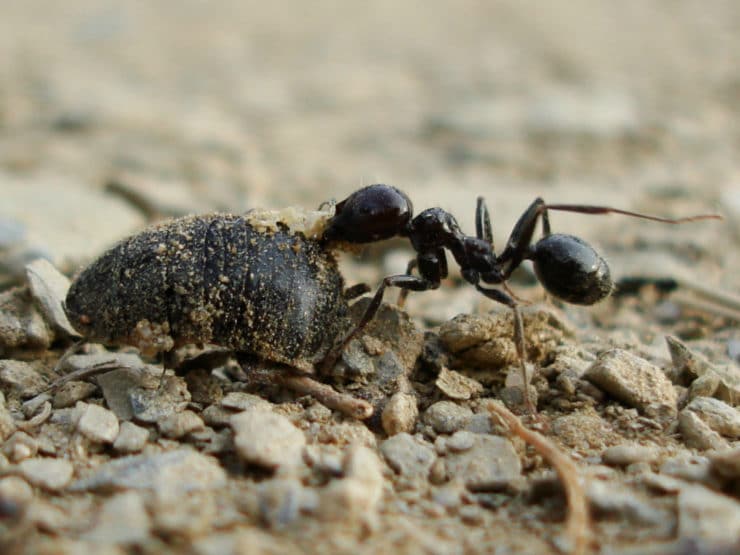

Why shouldn't you rush to get rid of the ants that have settled in the garden or vegetable garden? This is due to the fact that they are able to bring benefits, namely, eliminate pests and improve the quality of the soil. At the same time, there is a lot of harm from them:
- contribute to the spread of aphids;
- eat plantings;
- destroy flowering plants;
- destroy trees, lawns and flower beds;
- increase the acidity of the soil;
- in unfavorable weather conditions, they move to a dwelling;
- attack people and animals.
Fighting ants brings only a temporary result, since their populations are huge and they are actively multiplying. The most effective means for killing these pests are those that contain diazinon and chlorpyrifos. Ants in a summer cottage or in a vegetable garden can be exterminated with the help of such drugs popular among gardeners and gardeners as "Absolute", "Great Warrior", "Anteater", "Thunder", "Medvetoks". Trapping belts are used to protect trees from ants.
Why is it not recommended to use folk remedies against these pests? They have too little deterrent effect and are not able to cope with ants alone.
The nature and lifestyle of the ant
Insect ants life actively influences biogenesis due to their abundance. They are unique in their type of diet, lifestyle and influence on organisms, plants and animals.
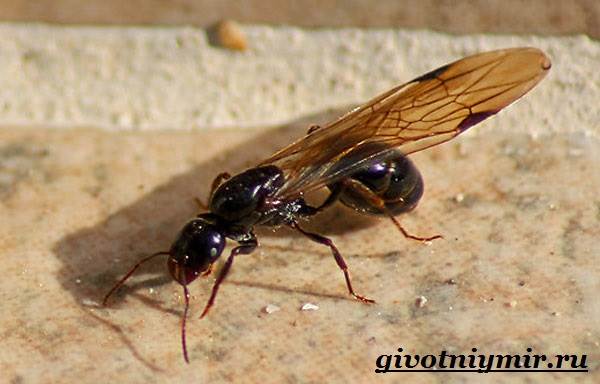

With their vital activity, the construction and restructuring of anthills, they loosen the soil and help the plants, feeding their roots with moisture and air.In their nests, ideal conditions are created for the development of bacteria, enriching the soil with useful substances and microelements.
The excrement of ants serves as a fertilizer. Various grasses grow rapidly near their dwellings. Insects forest ants promote the growth of oaks, pines and other trees.
Ants are hardworking insects and are extremely efficient. They can lift loads weighing twenty times their own and travel great distances. Ants – public insects.
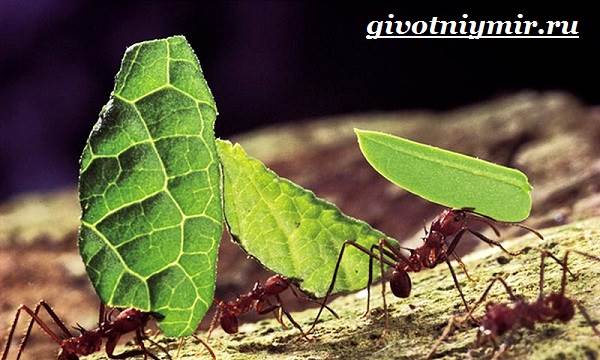

This means that their social structure resembles that of a human. Tropical ants are distinguished by a special variety of castes. They have a queen, soldiers, workers and slaves.
Ants and other insects, such as wasps and bees, are unable to live without their community, and separately from their own kind they die. An anthill is a single organism, each individual clan of which cannot exist without the rest. Each caste of this hierarchy performs a specific function.
A substance secreted by ants called "formic alcohol" serves as a component for medicines for many diseases. Among them are bronchial asthma, diabetes mellitus, rheumatism, tuberculosis and many others. It is also used to prevent hair loss.
House ants: why get turned on and how to get rid of them?
Ants enter an apartment or private house in search of food or shelter from the cold and rain. You need to start the fight with them by looking for a nest. It is there that you can find an ant family. Ant control should include the following steps:
- pour boiling water over the nest, while taking into account that the water is unlikely to reach the uterus;
- clean up the home and treat all surfaces with a disinfectant;
- patch up all cracks and cracks in the floor and walls;
- treat ant paths with anticancer gel (Kombat, Global, FAS, Dohlox), spray a spray near the anthill (Raptor, Raid, Dichlorvos) or place traps in places where parasites accumulate.
Loading ...
Exotic giant ants in the house
Some non-venomous species of large ants become inhabitants of exotic ant farms, which are called formicaria. A home anthill is a transparent container filled with sand or a special gel, into which an ant family is populated. These social insects lead a very active lifestyle, which can be watched for hours.
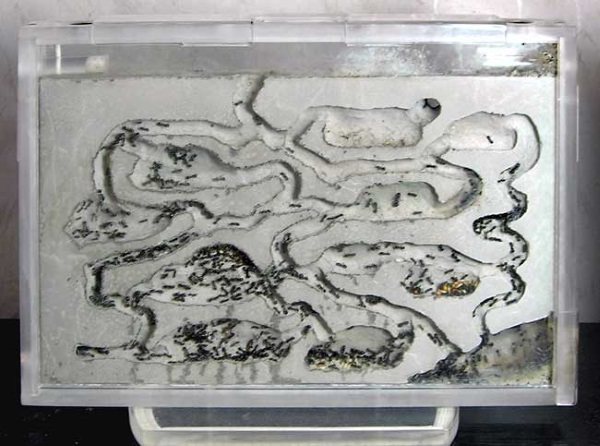

Children especially love this activity. Some firms install formicaria in the rest rooms of employees for relaxation. All that is needed to equip such an indoor anthill is a special container and food for insects, depending on the species.
Reproduction and life expectancy of an ant
There may be one or more queens in the family of these insects. Their mating flight occurs only once, while the collected sperm supply is enough for the rest of their lives. After the ritual, the female, shedding her wings, becomes a queen. Next, the uterus searches for a suitable place to lay the testicles.
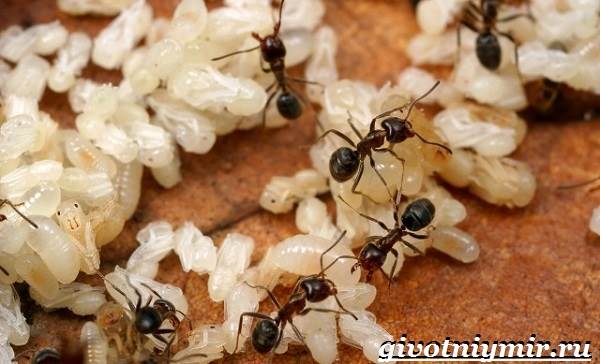

In forest ants, they are quite large in size, have a milky white color with a transparent shell and an elongated shape. From the eggs fertilized by the queen, females hatch, from the rest, males are obtained, which live only a few weeks before mating.
Ant larvae go through four stages of development and are similar to worms, are almost immobile and are fed by worker ants. Subsequently, they produce yellow or white pupae that have the shape of an egg.
Which caste an individual comes out of them depends entirely on feeding. The availability of breeding methods for ants of some species is impressive, for example, females can appear through asexual reproduction.
The lifespan of worker ants reaches three years.The life span of the queen, from the point of view of insects, is enormous and sometimes reaches twenty years. Tropical ants are active all year round, but those living in harsher regions are dormant in winter. Most often, the larvae enter diapause, and the adults simply reduce their activity.

